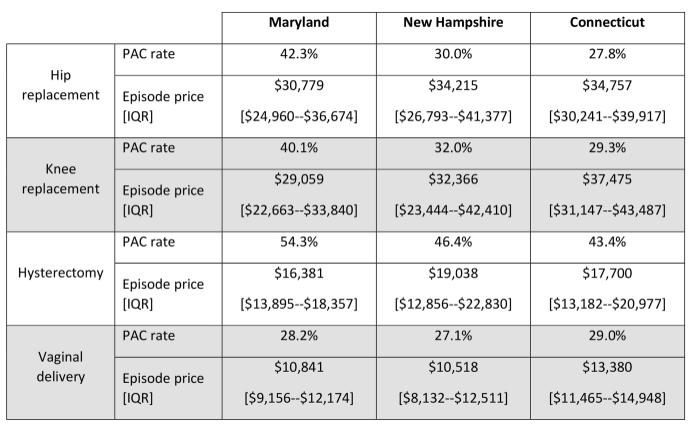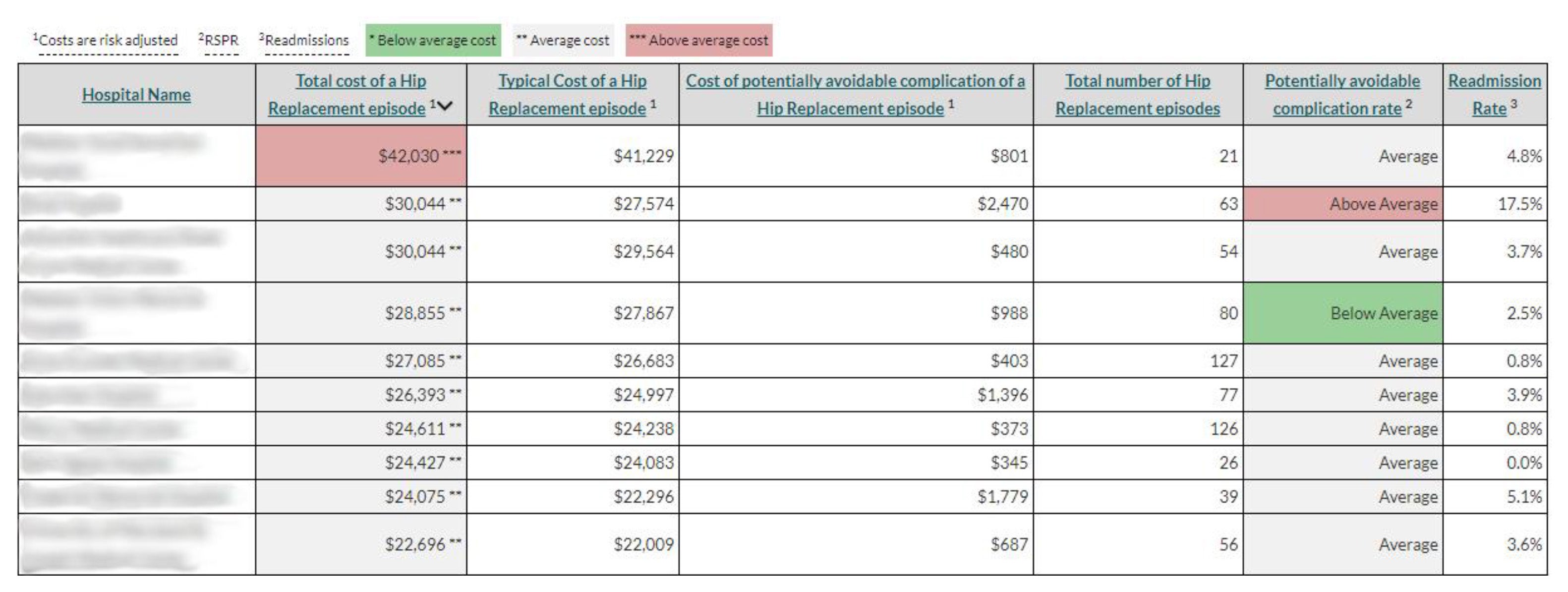Historically, the State of Maryland’s per capita health spending has been substantially higher than the national average. In an attempt to control health care costs, the state has been administering an all-payer rate setting system for Maryland hospitals---fixing the rates for Medicare and private payers---for more than 40 years. Regardless of one’s view of the desirability of these regulatory interventions, the Maryland system has been unable to address the wide disparity among providers in terms of both price and quality.
In an effort to address this disparity, Maryland is launching a new initiative to make information on the price and quality of health care more accessible to consumers through the website Wear the Cost. With the platform, the state has taken a decidedly different approach to improving transparency---one that engages consumers in a direct and ongoing conversation about health care costs, particularly the wide disparity among providers in terms of price and quality.
This is important because there is still a significant amount of variation in episode costs among facilities in Maryland. To be sure, compared to other states Maryland’s overall variation in the episode costs of selected procedures is lower, and the average prices, for the most part, are also lower (see Exhibit 1). But performance on quality measures is not better than other states, and on both quality and cost, there is still plenty of room for improvement.
Exhibit 1: Comparison Of Episode Prices And Potentially Avoidable Complication Rates

Source: Altarum, analysis of commercial insurance claims data, Sept 2017. Notes: PAC is potentially avoidable complication. IQR is interquartile range.
Maryland still experiences price variation because rates are hospital-specific, based on estimates of “allowable costs.” Providers, including physicians and hospitals, have latitude to negotiate their own rates for other unregulated fees and costs that are not specifically related to inpatient stays and outpatient services. These other fees and costs become an integral part of the total costs associated with a procedure.
The upshot is that price variation for consumers can translate into thousands of additional dollars out of pocket, a fact that, until now, has not been made generally available to the public in an understandable way.
Prior To The Wear The Cost Launch
The Maryland Health Care Commission (MHCC), an independent state regulatory panel appointed by the governor and confirmed by the state Senate, has broad authority to promote informed decision making among Maryland citizens. By providing public information on prices for common medical procedures, the MNCC will enable Marylanders to match prices with provider performance. This is integral to the MHCC’s statutory mission.
Major disparities among institutional prices for the same medical services rightly stimulates legitimate questions and encourages citizen engagement in the MHCC’s market-based efforts to control health care costs and help Marylanders’ secure value for their health care dollars. Price transparency, then, is a major contributor to the broadly shared goal of securing value in health care and aligns with other Maryland value-based reform efforts.
For more than 20 years, Maryland has had access to comprehensive data on health care use and spending through its all-payer claims database. Even though Maryland had access to a wealth of price information, the state was not sharing it with consumers in a way that was accessible or empowering, and did little to build awareness of and engagement with health care costs. The MHCC has been a leader in disseminating information on the quality of hospitals, nursing homes, and health plans, but until now hasn’t directly linked quality with costs.
A New Approach To Transparency
All of this has changed with the launch of WearTheCost.org. In developing the website, the MHCC studied best practices for making price and quality information accessible to consumers, including reducing the burden for consumers to process information, helping consumers by interpreting the data, and highlighting best options. Similar to the state of Maine’s excellent website, Maryland’s binds quality and cost information to help consumers better understand the potential trade-off between the two (See Exhibit 2). Unlike any other state, and perhaps most importantly, it is consumer-centric.
Exhibit 2: WearTheCost.org Cost And Quality Information For Selected Maryland Hospitals

Source: http://www.wearthecost.org/.
Wear the Cost also reflects a central theme of the work spearheaded by Costs of Care, which urges physicians to talk with their patients about health care prices. It also addresses findings by Public Agenda, a nonpartisan nonprofit organization that conducts in-depth opinion research, that highlight how, even in New Hampshire, the only state the Catalyst for Payment Reform and Health Care Incentives Improvement Institute Report Card has consistently awarded an A grade, most consumers don’t know the state’s health care cost website exists.
For transparency to have an effect, consumers must know where to find information and be able to use it. WearTheCost.org will support consumers in both of these ways by combining the site launch with an ongoing communications and social media campaign that will drive consumers to the site as well as provide technical assistance on how to put this information into action. Furthermore, through the initiative, the MHCC is launching a larger conversation about health care costs and quality with Maryland consumers. As a conversation starter, the MHCC is providing Maryland residents with t-shirts displaying the costs of common episodes of care. By inviting Maryland consumers to “Wear the Cost,” the MHCC is ensuring that health care cost information does more than exist on a website---it is out in the community to promote engagement with consumers.
To evaluate the effectiveness of this approach for consumers who visit WearTheCost.org, Altarum, a nonprofit health systems research and consulting organization, fielded a survey of more than 1,500 Marylanders to measure their engagement and other outcomes of interest before their exposure to this information. Altarum will field a follow-up survey in six months.
The initial results of the first survey indicate that 63 percent of respondents exposed to Wear The Cost messaging would make cost and quality comparisons when purchasing health services in the future, whereas only 42 percent of respondents in the control group reported the intention to do so. The survey also found that Marylanders are willing to shift where they seek care if they can save a few hundred dollars, and that they are appreciative of and willing to share the information on the Wear The Cost website.
A Clear Path Forward
Why is it so important not only to provide the information but also to engage consumers? Consumer engagement is critical to reforming the health care market. High health care costs are a top-of-mind concern for Americans, but most don’t realize they can take action to change the health care market to work better for them, such as ensuring prices are accessible, transparent, and can serve as reliable guides to both affordability and quality.
Health care doesn’t function like a normal market, and prices are largely mysterious. One would be hard pressed to find a critical mass of consumers and policy makers who think that this opacity is good for our health care system.
With the nation struggling to find a path toward high-quality, affordable, and accessible care, the benefits of illuminating both quality information and underlying costs is a rare area of bipartisan agreement. Maryland’s effort may lead the way.
This piece originally appeared in HealthAffairs.org



